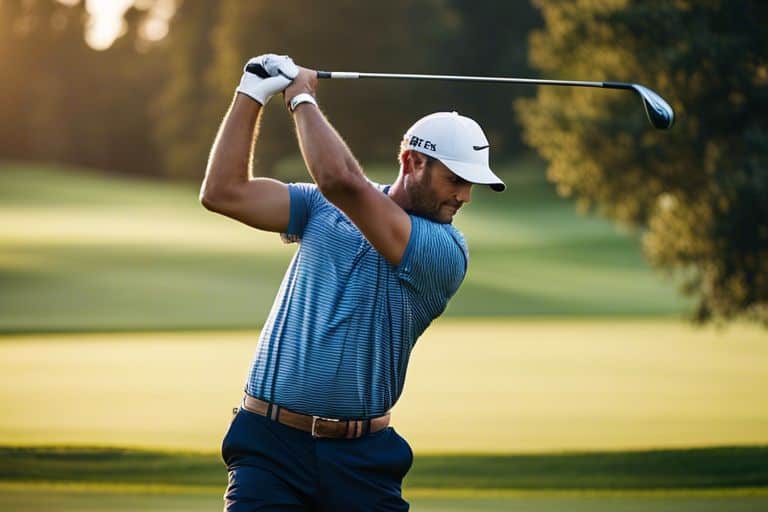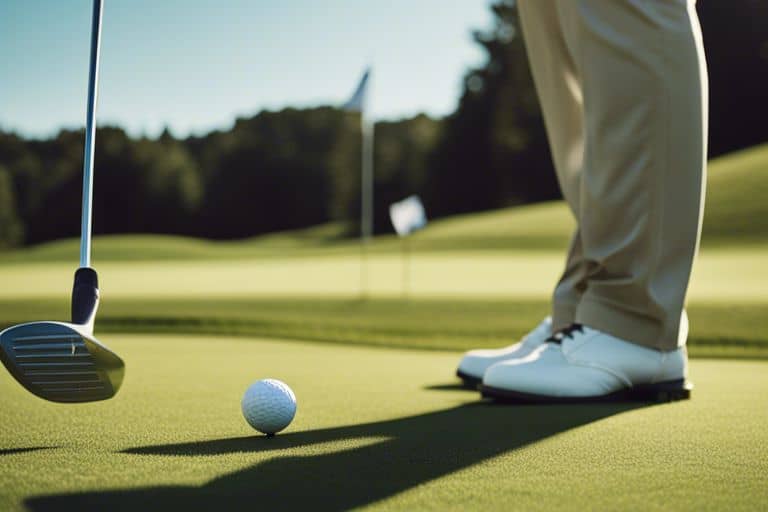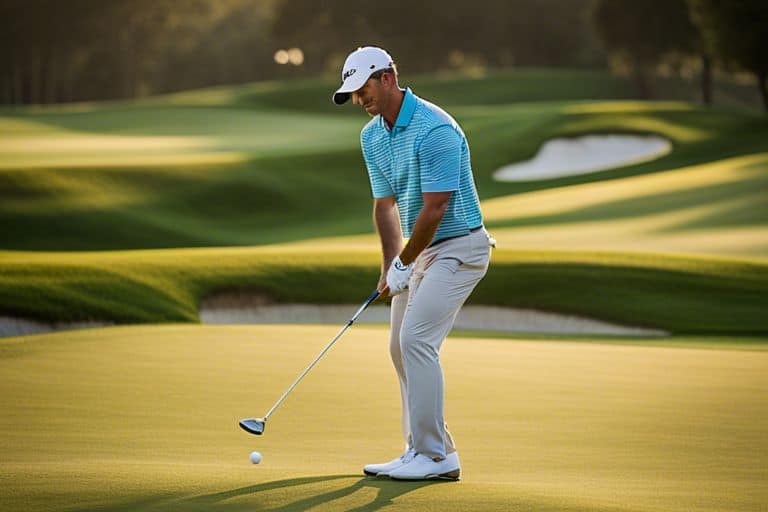How do you hit a "high draw" shot in golf?
Obtaining the right technique to hit a high draw shot in golf can be a game changer for your game. First, **position** your feet slightly closed to the target line and aim your clubface just a few degrees to the right. As you **take** your grip, ensure your hands are behind the club and your body is aligned with the clubface.
Throughout the swing, focus on **maintaining** a smooth and rhythmic motion, and as you make contact with the ball, you should feel a slight *upward* motion of the club to achieve the high draw shot with **elevated** trajectory and controlled **spin**. Remember to practice this shot on the driving range before incorporating it into your game on the course.
Understanding the High Draw
For many golfers, hitting a high draw shot is a coveted skill that can help add distance and accuracy to their game. In order to achieve a high draw consistently, it’s important to understand the key elements that contribute to this shot. In this chapter, I will break down the fundamentals of the high draw and explain how you can incorporate it into your game.
Definition of a High Draw in Golf
A high draw in golf refers to a shot that starts right of the target (for a right-handed player), then curves back towards the target in the air and lands with a higher trajectory. This type of shot allows you to carry hazards and maximize distance, making it a valuable tool in your golf arsenal. To execute a high draw, you’ll need to combine a closed clubface at impact with an in-to-out swing path, creating the necessary spin and curve to produce the high draw.
The Benefits of Hitting a High Draw
There are several benefits to being able to hit a high draw in golf. Firstly, the added distance from the higher trajectory can give you a significant advantage on long par 4s and par 5s. Additionally, the right-to-left curve of the shot can help you navigate doglegs and avoid trouble on the course. Finally, mastering the high draw can provide you with a powerful weapon for attacking pins tucked behind hazards or tucked close to the edge of a green, giving you the ability to get closer to hole locations that might be more difficult to access with a straight shot or fade.

The Mechanics of a High Draw Shot
Now that we understand the concept of a high draw shot in golf, let’s delve into the mechanics of how to execute this shot effectively. There are several key elements that come into play when attempting to hit a high draw, including the golf stance and alignment, swing path, and club face angle.
The Golf Stance and Alignment
When setting up for a high draw shot, the golf stance and alignment play a crucial role in achieving the desired outcome. I recommend positioning your feet slightly closed to the target line, with the ball positioned slightly farther back in your stance. By doing this, you are effectively setting yourself up for an inside-out swing path, which is essential for generating the right amount of draw spin on the ball.
Swing Path and Club Face Angle
As I mentioned earlier, an inside-out swing path is essential for hitting a high draw shot. This means that as you take the club back, I suggest focusing on bringing it slightly to the inside on the takeaway. This will help you approach the ball from the inside on the downswing, promoting a right-to-left spin on the ball. Additionally, paying attention to the club face angle is critical. I recommend keeping the club face slightly closed at impact, but not excessively so, to ensure that the ball starts on line with the target before drawing back towards it.

Practice Techniques for Perfecting the High Draw
Despite the complexity of hitting a high draw in golf, there are several practice techniques that can help you perfect this shot. These techniques will not only improve your swing but also give you the confidence to execute the high draw consistently on the course. By incorporating these practice methods into your training routine, you can take your game to the next level and become a more versatile and skilled golfer.
Drills to Enhance Your Swing
One of the most effective ways to improve your ability to hit a high draw is by practicing specific drills that focus on enhancing your swing. One popular drill is the “inside out” drill, where you deliberately swing with a slightly closed clubface and focus on bringing the club from inside the target line to outside the target line through impact. This helps create the right path for a high draw shot. Another useful drill is the “foot line” drill, where you place a club or alignment stick on the ground parallel to your target line and practice swinging along that line to ensure the correct swing path. These drills can greatly improve your swing mechanics and help you consistently produce a high draw.
Utilizing Technology for Swing Analysis
When it comes to perfecting the high draw, utilizing technology for swing analysis can be incredibly beneficial. Tools such as launch monitors, swing analyzers, and video recording devices can provide invaluable feedback on your swing mechanics and ball flight. By analyzing data such as club path, clubface angle, and ball spin, you can identify areas for improvement and make the necessary adjustments to achieve the high draw. Additionally, seeking professional help from a golf instructor who utilizes technology for swing analysis can provide personalized guidance and accelerate your progress in mastering the high draw shot.

Advanced Tips and Common Mistakes
Lastly, let’s dive into some advanced tips for hitting a high draw in golf, as well as some common mistakes to avoid. These will help you refine your technique and troubleshoot any issues you may be encountering.
- Advanced Tips:
Tips Explanation Strengthen your grip By rotating your hands slightly to the right on the handle, you can encourage a more closed clubface at impact, promoting a high draw. Adjust your stance Aim to the right of your target and position the ball slightly further back in your stance to encourage an inside-out swing path and a higher ball flight. Utilize your lower body Engage your lower body through the downswing, rotating your hips and shifting your weight onto your left side to promote the desired draw spin. - Common Mistakes:
Mistake Correction Overdoing the draw spin Focusing too much on intentionally promoting a draw can lead to an exaggerated ball flight or even a hook. Subtlety is key. Weakening the grip too much If your grip is too weak, the clubface may open up at impact, resulting in a fade or slice rather than the desired draw. Swinging too aggressively A forceful swing can lead to loss of control and accuracy, so focus on smooth, consistent mechanics.
Adjustments for Wind and Course Conditions
When facing challenging wind or course conditions, I recommend adjusting your strategy accordingly. For example, if there is a strong crosswind from right to left, you may need to aim further right and adjust your swing to compensate for the wind’s effects on the ball flight. Similarly, if you’re playing on a firm, fast-running course, you may need to adapt your ball position and club selection to achieve the desired high draw.
Pitfalls to Avoid When Learning the High Draw
While mastering the high draw can be immensely rewarding, there are some common pitfalls to be mindful of. One of the most important things to avoid is becoming too fixated on hitting a draw at the expense of your overall game. It’s crucial to maintain a balanced approach and focus on developing a well-rounded skill set. Additionally, be wary of overcomplicating your technique or making drastic changes in pursuit of the high draw, as this can lead to inconsistency and frustration. By staying patient and methodical in your approach, you can steadily improve your ability to hit a high draw while avoiding these potential stumbling blocks.
Conclusion
Drawing together the key elements of a strong grip, closed clubface, and an inside-to-out swing path, I have outlined the necessary steps to hit a “high draw” shot in golf. By mastering these components, you can effectively shape your shots to generate a high draw, adding distance and control to your game. With practice and dedication, you can become proficient in hitting this challenging shot and expand your repertoire on the course. Remember, consistency is key, so keep refining your technique to achieve the best results.






